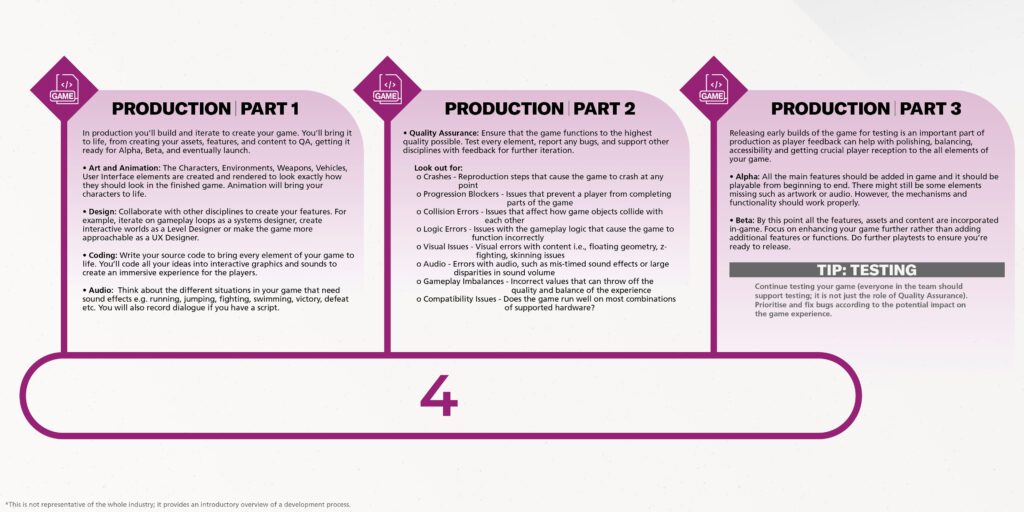Animation is a crucial element in game design that brings characters and environments to life, conveying emotions, movements, and actions in a way that static visuals cannot. Key elements of animation in game design include timing, spacing, posing, squash and stretch, and anticipation. Developers use a variety of techniques such as keyframe, traditional, and procedural animation to create animations. They utilize 3D modeling software, animation software, and game engines to integrate these animations into a game’s code. Proper animation can create an immersive and engaging experience for players, making it a critical aspect of game design.
The Role of Animation in Game Design: Bringing Characters and Environments to Life
Game design is an intricate process, involving multiple steps such as planning, concept creation, prototyping, development, and testing. One crucial aspect of game design that significantly impacts the overall quality and experience of a game is animation. In this article, we’ll delve deeper into the role of animation in game design, discussing how it brings characters and environments to life, and the techniques and tools that game developers use to create animations.
Why is Animation Important in Game Design?
Animation plays a crucial role in game design, as it brings characters and environments to life. It helps convey emotions, movements, and actions in a way that words and static visuals cannot. Animations make games more immersive and engaging, making players feel like they are part of the game world. Without animation, games would feel stiff and lifeless, lacking the excitement and energy that gamers expect.
The Elements of Animation in Game Design
There are several elements of animation in game design that developers use to create compelling character and environment animations. These elements include:
Timing
Timing is critical in animation, as it gives characters and environments a sense of rhythm and pace. This timing is achieved by using a series of frames that show the progression of movement over time. The speed at which these frames are shown creates the illusion of movement.
Spacing
Spacing is the distance between two frames in an animation, and it determines the speed and fluidity of the motion. Proper spacing gives animations a natural, flowing feel, while incorrect spacing can make them feel stiff and robotic.
Posing
Posing is the act of creating a specific posture or stance for a character or object, which conveys a particular emotion or action. Positioning is essential in animation, as it helps tell a story and convey a character’s personality or mood.
Squash and Stretch
Squash and stretch is a technique used in animation to give characters and objects a sense of weight and movement. This technique involves stretching and deforming characters and objects as they move, making them appear more lively and dynamic.
Anticipation
Anticipation is the act of preparing the viewer for an upcoming action or movement. In animation, anticipation is critical for making movements feel more natural and realistic.
Animation Techniques in Game Design
There are several animation techniques used in game design, including:
Keyframe Animation
Keyframe animation involves creating a few essential frames (keyframes) that define the positions and movements of characters and objects. The software then fills in the gaps between these frames to create a seamless animation. Keyframe animation is popular in games where characters have a relatively small set of movements or abilities, such as platformers.
Traditional Animation
Traditional animation involves drawing each frame of an animation by hand. While this technique is time-consuming, it allows for more control and precision in creating complex movements and expressions. Traditional animation is often used in cutscenes or cinematic sequences.
Procedural Animation
Procedural animation involves using algorithms to create animations automatically. This technique is often used to create dynamic, physics-based animations, such as explosions or environmental effects.
The Tools of Animation in Game Design
Game developers use a variety of tools to create animations in their games. These tools include:
3D Modeling Software
3D modeling software, such as Maya or Blender, is used to create 3D models of characters and environments. Once these models are created, they can be animated using various techniques.
Animation Software
Animation software, such as Adobe Animate or Spine, is used to create and edit animations. These tools allow developers to create keyframe animations, traditional animations, and procedural animations more efficiently.
Game Engines
Game engines, such as Unity or Unreal Engine, are used to bring all the elements of a game together, including animation. These engines include tools for creating and managing animations, making it easier to integrate them into a game’s code.
Conclusion
Animation plays a vital role in game design, bringing characters and environments to life, and creating immersive and engaging experiences for players. Game developers use a variety of animation techniques and tools to create animations that feel natural, fluid, and dynamic. Proper animation can make or break a game, making it essential for game designers to pay close attention to this critical aspect of game design.
